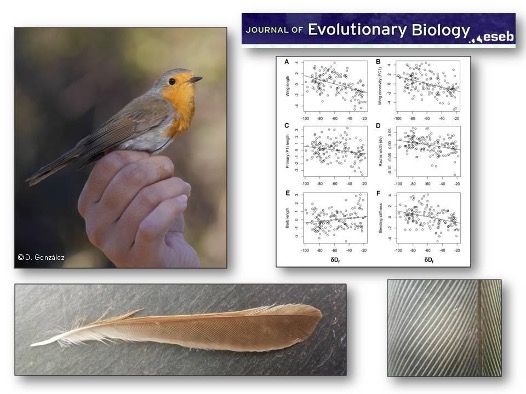de la Hera I, Hernández-Téllez I, Pérez-Rigueiro J, Pérez-Tris J, Rojo FJ, Tellería JL.
Mechanical and structural adaptations to migration in the flight feathers of a Palaearctic passerine.
J Evol Biol. 2020 Apr 13.
DOI: 10.1111/jeb.13630.
RESUMEN
Current avian migration patterns in temperate regions have been developed in parallel to the glacial retreat and subsequent colonization of the ice-free areas during the Holocene period. This process resulted in a geographic gradient of greater seasonality as latitude increased that favoured migration and its corresponding morphological and physiological (co)adaptations. Most evidence of avian morphological adaptations to migration comes from the analysis of variation in the length and shape of the wings, but the existence of additional intra-feather structural adjustments has been greatly overlooked despite their potential to be under natural selection. To shed some light on this question, we used data from European robins Erithacus rubecula overwintering in Campo de Gibraltar (Southern Iberia), where sedentary robins coexist during winter with conspecifics with a broad range of breeding origins and, hence, migration distances. We explicitly explored how wing length and shape, as well as several functional (bending stiffness), developmental (feather growth rate) and structural (size and complexity of feather rachis and vane) characteristics of flight feathers varied in relation to migration distance, which was estimated from the hydrogen stable isotope ratios of the summer-produced tail feathers. Our results revealed that migration distance not only favoured longer and more concave wings, but also promoted longer inner primaries with a thicker dorsoventral rachis and shorter barb lengths, which in turn conferred more bending stiffness to these feathers. We suggest that these intra-feather structural adjustments could be an additional, largely unnoticed, adaptation within the avian migratory syndrome that might have the potential to evolve relatively quickly to facilitate the occupation of seasonal environments.
